VIA Rail Station
Introduction
Author-Uploaded Audio
Listen to a narration of this entry's description by UWO Digital Public History 2019.
Text-to-speech Audio
Images
King George VI and Queen Elizabeth at the CNR Station on York Street, 1939.
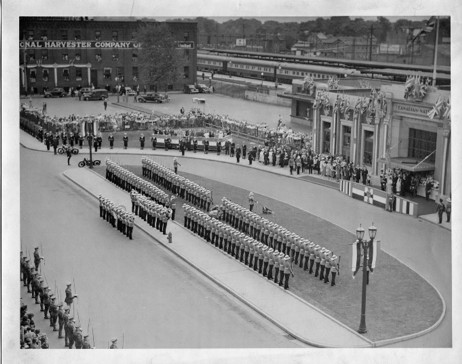
Londoners welcoming soldiers home
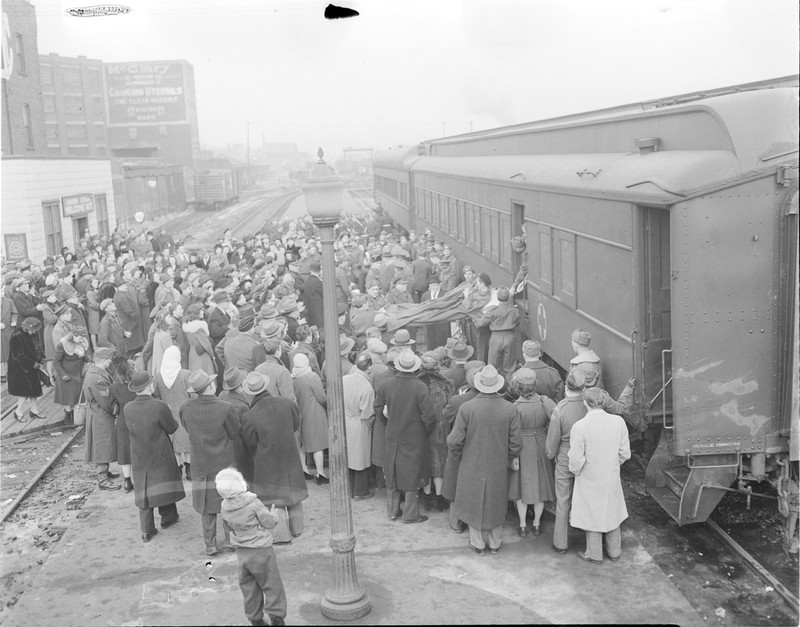
Londoners greeting 300 arriving soldiers at the CNR Station on York Street, June 23, 1945.
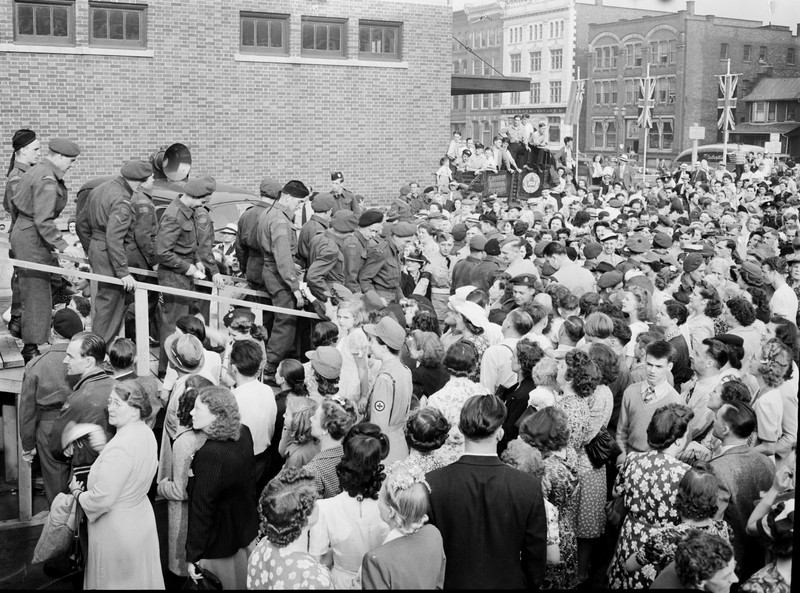
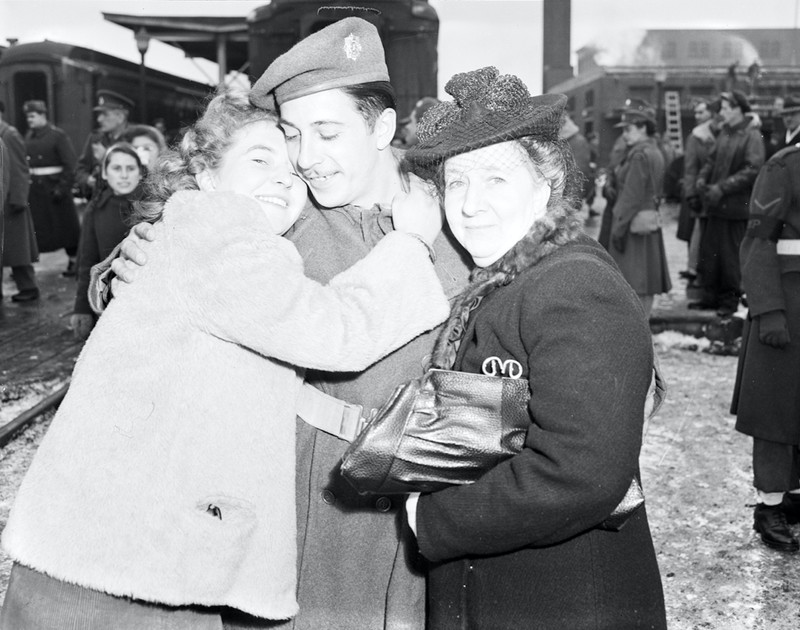
Londoners reuniting with soldiers at the CNR Station on York Street, June 23, 1945.
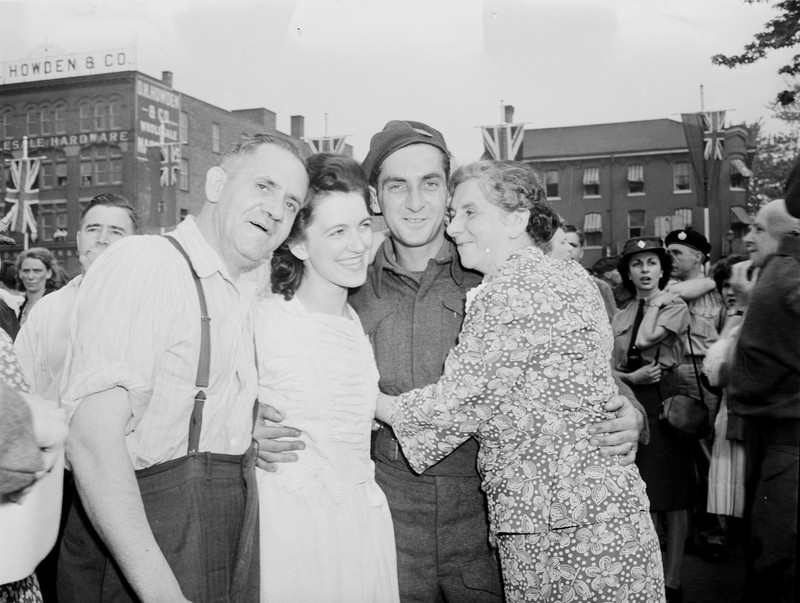
Backstory and Context
Author-Uploaded Audio
Listen to a narration of this entry's description by UWO Digital Public History 2019.
Text-to-speech Audio
Welcome to the VIA Rail London train station! The Grand Western Railway originally built this hub in 1853, and it was taken over by the Grand Trunk Railway in 1882. When the company declared bankruptcy in 1919, the Federal Government placed its lines under the management of Canadian National Railways. The original station was replaced in 1935 with an Art Deco structure that was again replaced in the early 1960s. Following victory in Europe, this station was the final stop for many soldiers returning to London and the surrounding area.
The London Free Press informed Londoners on the scheduled arrivals of Canadian soldiers at the York Street station. Thousands would frequently crowd the train station to welcome each veteran home and to celebrate family reunions. Photographs of the day show London’s downtown streets overflowing with people passionately cheering the returning troops. The scheduled time of the troop arrivals was of little consequence: in one instance, hundreds of Londoners turned out to “give a jubilant welcome” at seven A.M. to the “300 fighting sons of the city and district, vanguard of the victorious Canadian armies that smashed the Hun in Europe.”
While reporters of the Free Press often enthusiastically described the arrival of soldiers at York station as an “unforgettable scene” where crowds fervently welcomed returning troops, some Londoners felt more could be done to greet returning veterans. On June 26th, 1945, the London Free Press published an anonymous letter by a mother of three service members disappointed in the enthusiasm of a crowd a few days earlier. Encouraging Londoners to “loosen up,” the woman argued that all returning troops deserved “a real hearty welcome.”
Come on, folks, loosen up and show the boys we are glad to have them home, to live again as human beings. While we pay tribute to the thousands who are not returning, we must also express our appreciation to the returning ones. After hearing the noise of guns and bombs for so long a little cheering would be music to these fellows’ ears. There were enough people at the station to make the city shake…So let’s welcome them home with a cheer and smile.
Sources
"Grand Trunk Railway Depot, London, Ontario." London Public Library: Ivey Family London Room Digital Collections. Accessed October 18, 2019. http://images.ourontario.ca/london/69363/data?n=15
Keshen, Jeff. Saints, Sinners, and Soldiers: Canadas Second World War. Vancouver: UBC Press, 2004.
Keshen, Jeffery. “Getting It Right the second Time Around: The Reintegration of Canadian Veterans of World War Two.” In The Veterans Charter and Post-World War II Canada, edited by Peter Neary and J.L. Granatstein, 62-84. Montreal, Kingston, London and Buffalo: McGill-Queen’s University Press, 1998.
London Free Press. June 22, 1945.
London Free Press. June 23, 1945.
London Free Press. June 26, 1945.
Veterans Affairs Canada. “Back to ‘Civvy’ Street: Post-War Veteran Re-Establishment.” Back to Civvy Street: Post-War Veteran Re-Establishment - Historical Sheet - Second World War - History - Veterans Affairs Canada, February 14, 2019. https://www.veterans.gc.ca/eng/remembrance/history/historical-sheets/civvy.
“Royal Visit, 1939 - King George VI and Queen Elizabeth at C.N.R. Station, with Lt. Pope, R.C.R. in foreground, London, Ontario.” Ivey Family London Room Digital Collections. Accessed October 19, 2019. http://images.ourontario.ca/london/81487/data?n=4.
London Free Press, June 23, 1945.
London Free Press, June 23, 1945.
